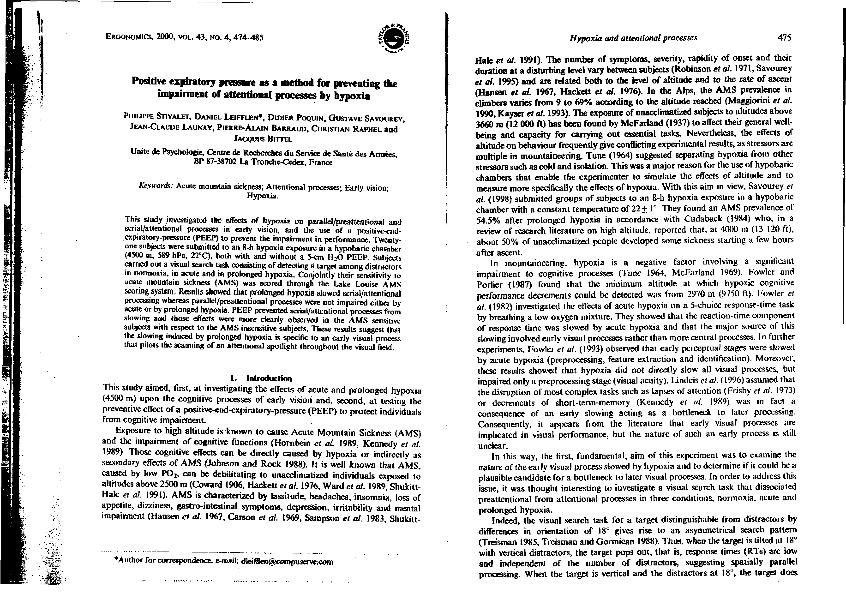Positive expiratory pressure as a method for preventing the impairment of attentional processes by hypoxia

Contenido multimedia no disponible por derechos de autor o por acceso restringido. Contacte con la institución para más información.
| Tag | 1 | 2 | Valor |
|---|---|---|---|
| LDR | 00000nab a2200000 i 4500 | ||
| 001 | MAP20071503434 | ||
| 003 | MAP | ||
| 005 | 20080418123825.0 | ||
| 007 | hzruuu---uuuu | ||
| 008 | 030318e20000401gbr|||| | |00010|eng d | ||
| 040 | $aMAP$bspa | ||
| 084 | $a931 | ||
| 245 | 1 | 0 | $aPositive expiratory pressure as a method for preventing the impairment of attentional processes by hypoxia$cPhilippe Stivalet...[et al] |
| 520 | 8 | $aThe article aimed first, at investigating the effects of acute and prolonged hypoxia (4500 m) upon the cognitive processes of early vision and, second, at testing the preventive effect of a positive-end-expiratory-pressure (PEEP) to protect individuals from cognitive impairment | |
| 650 | 0 | 1 | $0MAPA20080584597$aDeportes de riesgo |
| 650 | 1 | 1 | $0MAPA20080548278$aMontañas |
| 650 | 1 | 1 | $0MAPA20080545086$aPresión |
| 650 | 0 | 1 | $0MAPA20080547936$aLesiones |
| 650 | 1 | 1 | $0MAPA20080581091$aLesiones oculares |
| 650 | 1 | 1 | $0MAPA20080539771$aSalud |
| 700 | 1 | $0MAPA20080233792$aStivalet, Philippe | |
| 740 | 0 | $aErgonomics | |
| 773 | 0 | $tErgonomics$dLondon and Washington$gVol. 43, nº 4, April 2000 ; p. 474-485 |

